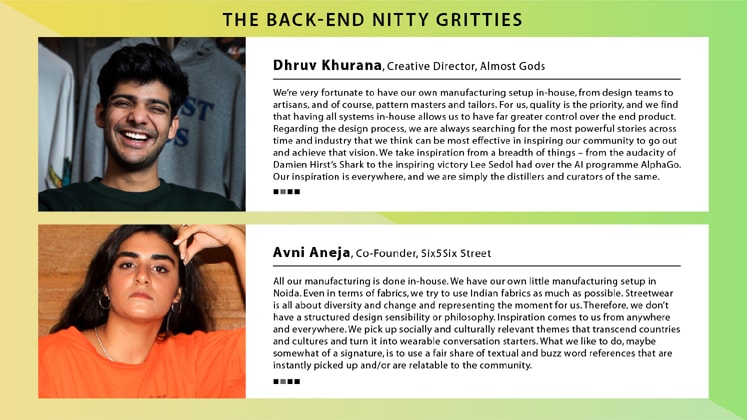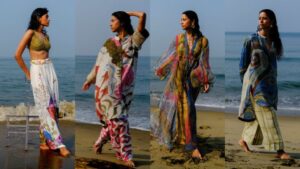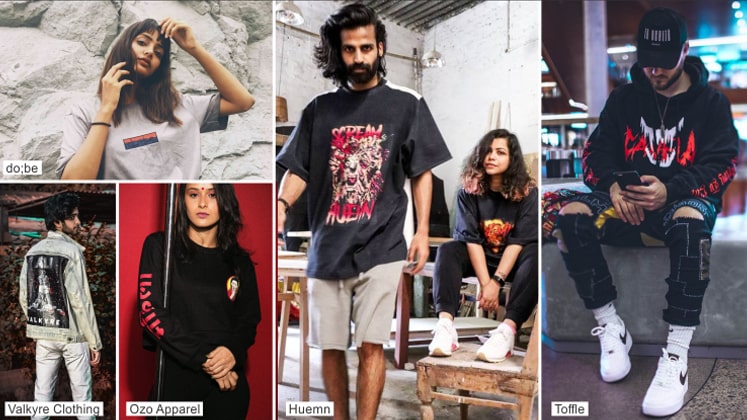
It’s the democracy of fashion, it’s a specific fashion genre, it’s a style of comfortable casual clothing, inspired by skateboarding, surfing, hip-hop, and has its own mix of swag and punk – it’s Streetwear, a category in fashion apparel segment which has been there since the 1980s, but which India has had a very recent encounter with. Inspired by the sneaker culture and skateboards of California and hipsters of New York, streetwear as a category emerged in the 1980s and has been developing ever since into one of the most distinctive and iconic genres of clothing. Over the years, it has been building up a reputation with the younger generation and now has entered into the high-end fashion segment as well with the likes of Supreme, Palace, Champion, and Off White among others.
The popularity of this distinct fashion category only recently entered the Indian borders and even as it is at a whole different level globally, India is definitely catching up. While big names in the likes of Supreme, BAPE, Off White, The Hundreds, etc. have found a customer base in India, the category has over the last few years started witnessing a rise in the number of start-up brands offering distinct streetwear collection to the discerning. These include Six5Six Street which has a raw expression and authenticity at the core of its brand’s ideology; New Delhi-based Almost Gods which aims at integrating traditional ideals with modern design, cut and functionality; BISKIT which is a multidisciplinary art and design concept label aiming at breaking the duality of men and women’s clothing; Delhiwear which is a beautiful integration of street culture with India’s cultural fabric; Jaywalking known for its rawness; Anand Ahuja’s Bhane which is making street style all about people; Cricketer KLRahul’s Gully which draws on international streetwear trends and Indian culture, and a number of others.
Dhruv Khurana, Creative Director, Almost Gods, asserts, “Streetwear, to me, is the frame fashion is in at the moment that allows for self-expression using graphics and techniques that had been shunned by the industry insiders for many years. For me personally, Almost Gods arose – not around the idea of fashion itself but rather as a need to create a platform that would act as a central point around which we may have conversations about what drives and shapes culture. Simultaneously, we see it as a means of connecting the different proponents and more importantly people, who through their diverse storytelling and energetic actions are constantly shaping the lens through which we as a global collective, view and engage with the world.”
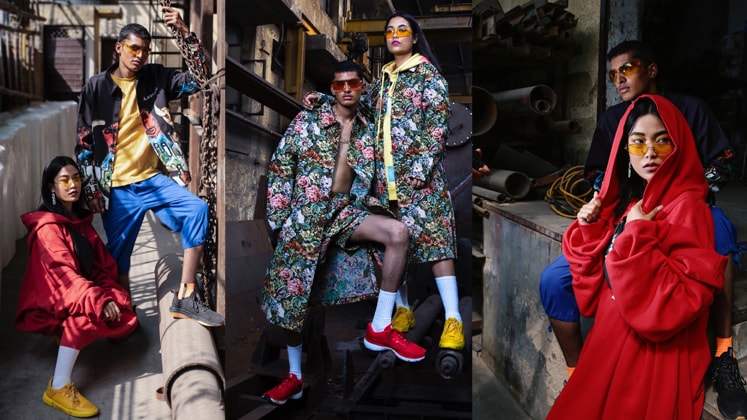
Poised for growth and how!
Streetwear category had been, for years, dominated by US, UK and Japanese brands, and it is only now that it has found its place in the Indian market. However, India in the streetwear space right now is what the US was in the ’80s – a harmonious mosaic of clashing subcultures right from Disco to Hip-hop. Avni Aneja, Co-founder, Six5Six Street, maintains, “I think through social media and pop culture, a lot of the Indian audience is now acquainted with the term streetwear, although for a lot of people streetwear equals to hype. I have no complaints though because at least more people are not trying to understand what streetwear actually is, and there’s also a niche but growing market for it. It is only onwards and upwards from this point on. There is so much that we have to offer as a country whether it is in terms of street fashion, art, music, culture that is still undiscovered. While people are still wary of spending money on streetwear unless it’s the hype brands and sneakers, they do care about what you bring to them as a brand than just the clothes. They want to hear your story, they want the clothes to say something.”
Avni and her brother Ambar discovered streetwear while pursuing their academic degrees outside of India and later started the brand in India. SIX5SIX Street creates pieces that have a satirical take on issues that are important enough to be talked about.

With the help of social media, streetwear has emerged as one of the key wardrobe staples in our day-to-day wardrobe and the #OOTD phenomenon is keeping the streetwear category alive and kicking. People are now investing in a spectrum of casual basics and streetwear pieces to create their own unique individualistic style statements. Currently, India is in a revolutionary stage and is open to change and it is upto these new homegrown brands to provide the nation with substantial content that leaves a mark and sets the foundation for streetwear. While India hasn’t been an easy market when it comes to unconventional fashion unlike the existing norms, but decades of gradual acceptance and evolution in the Indian market has led this category to flourish.
What’s trending?
Streetwear has grown tremendously from its evolution on the streets to its presence in the luxury fashion segment. Street styles basically capture the pulse of urban dressing and every city has something unique to contribute to its fashion legacy and streetwear represents that style curation. And so, the category does not represent any one visual aesthetic. In this category, a group of people identify with certain cohesive aesthetics which brings out a unique blend of fashion aesthetics. Dhruv Khurana elaborates, “For Almost Gods, we really want to create a story of energy and positivity, a celebration of the members of our community. We want them to feel powerful and creative, such that they themselves can go ahead and change the world. In that vein, the visual language we adopt is one of maximalist-minimalism, explosions of energy followed by quiet pockets in our pieces and brand language, wherein we want the customers to find and insert their own voice as well.” The bestselling product right now at Almost Gods is its ‘Black Sabbath’ pieces; as for Six5Six Street, they are the brand’s oversized T-shirts with interesting prints and slogans and tie-dye hoodies.
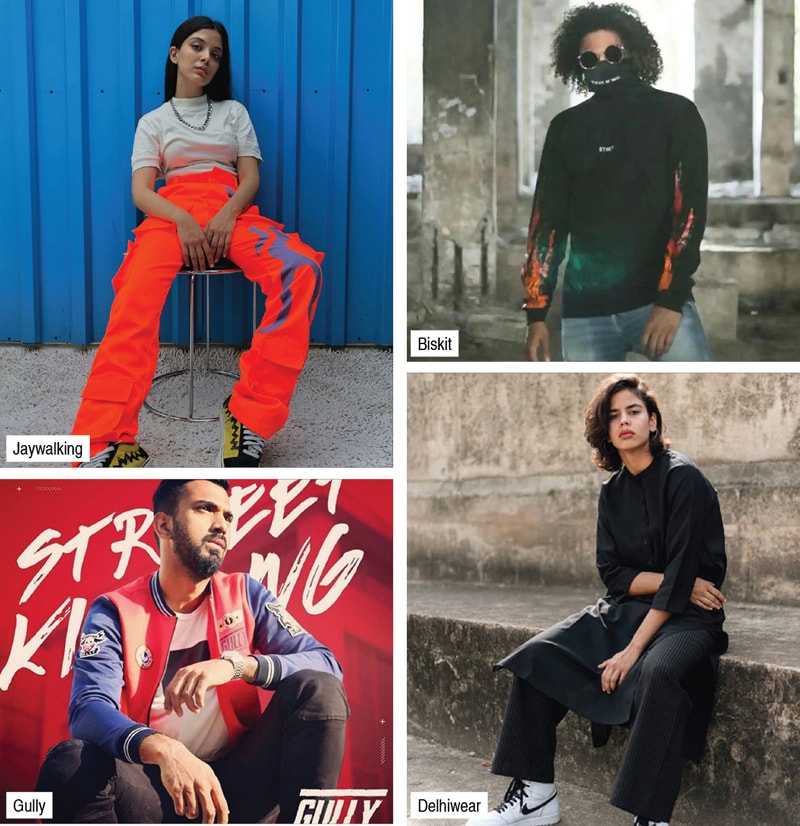
Today, India boasts a sizable community that is into streetwear. Oversize fits, logo t-shirts, chunky ‘dad’ sneakers, snapback and bucket hats, long sleeve tees, coach jackets, tactical apparel, fanny packs, slides with interesting socks, tracksuits, are some styles in this category. While some streetwear enthusiasts are those who are fans of the OG streetwear brands, for their heritage, storytelling, role in building sub-culture communities, there are others who love streetwear inspired luxury or street-luxe, and few who love the ‘hype’. Now hype is the hottest drop and these merchandises are usually celebrity driven or collaborative collections; however, brands need to keep in mind the brand identity and what it represents before collaborating with artists or stylists or celebrities.
‘Drop’ it like it’s hot
Unlike the usual Spring/Summer, Autumn/Winter season collection, streetwear brands mostly go for drops which offer limited edition streetwear and sneakers and sometimes even just one style. A drop is released often as a marketing technique by streetwear brands. They give exclusivity in different street-level dressing. In fact to keep it more interesting, celebrities and social media influencers also collaborate with big brands to make streetwear more coveted. Even the likes of Louis Vuitton and Alexander Wang are taking cues from streetwear and are adopting the ‘drop model’
“The Drop Culture is definitely a more western concept at this point in time in terms of clothes. The idea behind it is to create a sense of exclusivity for the people who manage to purchase the particular dropped item because of scarce availability. Standing in queues, waiting for days, camping outside stores- it’s a way to reiterate the no pain, no gain philosophy,” avers Avni Aneja. The first drop by Six5Six was called ‘The Global Traveller’ and dealt with everything happening around the world with respect to the refugee crisis; and its second drop ‘Humanity in the Digital Age’ focused on dependence on screens and fascination with technology.
The journey ahead
As diverse a market as streetwear, homegrown brands face the dual challenge of representing the cultural gamut they exist in while also not isolating themselves from global attitudes. Talking about the challenges facing this segment, Avni Aneja asserts, “Awareness and understanding of what we do and why we do it is definitely a struggle. Streetwear is still in a nascent stage in India, so the size of the market is relatively smaller. Also, hype takes over most of the time when people think of streetwear, so constant comparison with international brands is another issue.” Besides, the current situation in the wake of the global pandemic caused by COVID-19 has proved to be a game-changer and has forced start-ups to take a break and restrategise on most of their plans, moving forward.
Even as modern fashion is branching off into as many different and distinctive categories and it’s becoming more difficult to distinguish between fads and mainstays, streetwear is one category that’s here to stay. As the entire generation of hype beasts and skate rats call him, Bobby Hundreds has once said while explaining the category, “Streetwear is about culture and not about clothing.” And culture might change or vary from civilisation to civilisation but does not die. “With the internet and technology being what it is right now, there’s democratisation by the people to choose which voices they want to hear and streetwear is overwhelmingly what people are connecting to. The future is going to be one of a lot of evolution of the voice and the stories that brands within the space choose to tell. Besides, there has been demand from Tier-2 and Tier-3 towns as well which ensures further growth coming from those communities,” concludes Dhruv Khurana.

